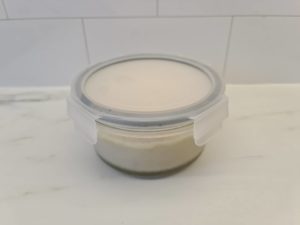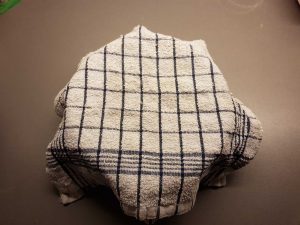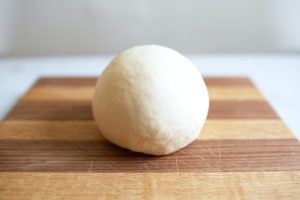Pizza dough balls can be a pain to work with. It’s hard to manage multiple dough balls at once, and they stick to everything – your hands, the mixing bowl, and each other. But not anymore! Not with the right pizza dough ball container.
Individual pizza dough ball containers make handling the dough easier during fermentation. They prevent the dough balls from sticking to each other when they are rising. And also makes managing multiple dough balls easier and more space-efficient. In addition to that, dough containers prevent the surface of the dough balls from drying out and help the dough balls keep their shape during fermentation, so you’ll get perfectly round pizzas.
So if you want less sticking, easier and more space-efficient dough handling, and round pizza every time, you need a set of quality pizza dough proofing containers!
A high-quality glass container perfect for storing pizza dough in the fridge or freezer, that stacks for convenient and compact storage.
What is a pizza dough proofing container? And what is it used for?
A pizza dough container is a container to store individual pizza dough balls in during fermentation.
The purpose of a pizza dough ball container are:
- Easier managing and moving multiple dough balls
- Preventing dough balls from sticking to each other
- Preventing the surface from drying out
- Helping the dough balls to keep their shape to make a round pizza
The main purpose of a pizza dough container is to make it easier to handle multiple dough balls during fermentation. So you want one counter for each dough ball.
Dough ball containers come in many sizes, shapes, and materials. But for most pizza baking, a round glass container with a lid is the best option.
When you let your dough rise in a container, it will naturally grow to fill the container. So a round container will create a round dough ball. A round dough ball is the best starting point for round pizza.
Containers for pizza dough come in a variety of different materials, but glass and plastic are the most ones. Glass is a good material because it’s smooth and helps prevent the dough ball from sticking to the container. It’s also durable, easy to clean, and dishwasher-safe. In addition to that glass can also handle low temperatures, which is perfect when you want to freeze pizza for another time.
A lid is also essential to prevent the surface of your dough balls du drying out during fermentation. If you leave your dough balls out without covering them a dry crust will develop on the dough balls. And it will get worse the longer you leave them uncovered. But a nearly air-tight container will prevent this from happening.
Some dough ball containers are also stackable, which makes them airtight without a lid. These are a great option for even more space-efficient storage. And that can come in handy in a crowded fridge or freezer.
Do you need a pizza dough container?
Pizza dough containers are most useful for people who make a few pizzas at a time. Between 2 and 8. They are also useful if you do cold fermentation in the fridge or want to freeze the leftover pizza dough.
If you only make one pizza dough ball, a baking bowl with plastic wrap will do. And if you, need to make a lot of pizzas, a large pizza proofing box is a better choice, since they can fit more dough balls.
Pizza dough container vs proofing box
A pizza proofing box is a larger box that can fit multiple pizza dough balls, often 8-16 at once. And you will often see these in pizzerias.
But larger proofing boxes have a few disadvantages over individual pizza dough containers:
- Not suitable for smaller batches of pizza
- Requires more space
- You must use all the pizza balls at once
- The dough balls stick to each other
Even though you don’t need to completely fill your proofing box with dough balls, they are more suitable for larger batches of dough.
The larger size allows many pizza dough balls, but it also means the box itself is large. So it can be challenging to store a proofing box, in a regular fridge or freezer.
Another disadvantage of a proofing box is that you need to use all the dough balls at once. If you store the dough balls in individual containers, it’s much easier to throw the leftover dough balls in the fridge or freezer. And only take out the leftover dough balls you need next time you want to make pizza. Maybe you’re home alone and only want one pizza for yourself.
And even if you are planning to bake 10 pizzas for a large party, it takes time to bake that many pizzas and the dough balls may overproof before you get the last pizza. But if you use individual containers, you can stick them in the fridge to slow down fermentation.
In a proofing box, the dough balls also tend to stick to each other when they rise. It, therefore, requires practice and the right tools to get out the dough balls and make round, even pizzas.
In summary, proofing boxes are most suitable in a professional environment, while individual dough ball containers offer more flexibility and are a better option for home chefs.
What to look for in a good pizza dough proofing container
The 4 key elements to look for in a proofing container are:
- The right size for your pizza dough balls
- Shape
- Material
- A nearly air-tight lid
The main thing to look for when shopping for dough containers is the size. The right size depends on how large pizza dough balls you make, which in turn depends on the type of pizza you want to make. For general pizza making around 4 cups (1 liter) is a good size. But if you make smaller portion-size pizzas, like Neapolitan pizza, 2-3 cups (0.5 – 0.7 liters) is enough.
The second thing to look for is the shape. A square container is better for a square pizza and a round container is better for round pizza. If you start with a round pizza dough ball, it’s easier to make a round, even pizza. You don’t want to work the dough necessary to get it into the right shape since that can ruin the rim and result in a less soft and airy crust.
When it comes to materials, both plastic and glass are great options. The most important is that your dough containers are food-safe. A smooth surface is also better because the dough balls will stick less. I also prefer the containers to be dishwasher-safe as well, because it makes cleaning easier.
The dough ball containers should also be close to air-tight to prevent the surface of the dough balls from drying out. The containers should however not be completely air-tight, since the dough needs space to expand and the yeast will let out gas during the fermentation. And if the container is completely air-tight this gas has nowhere to go. You can always make a small hole in the lid if you need to.
Another thing that can be is stackability. If you can stack your containers they will be easier to store and require less space.
The best container for proofing pizza dough
The best pizza dough container for individual dough balls is the OXO 4 Cup Smart Seal Food Storage Container.
A high-quality glass container perfect for storing pizza dough in the fridge or freezer, that stacks for convenient and compact storage.
The OXO Food Storage Container is the perfect pizza dough container! It comes in durable borosilicate glass with a plastic lid that locks tightly with the four locking tabs. The container is also freezer-safe, so you can refrigerate or freeze your leftover pizza dough for a rainy day.
It’s a 4-cup, or 32 oz, container (around 1 liter), which is a great size for most types of home pizza. From Neapolitan to New York style. And the round shape makes sure you’ll get nice, round pizza dough balls that make round, even pizzas.
The containers are also stackable if you’re planning to make multiple pizzas. And this makes storage more convenient and space-efficient. Especially in a crowded fridge or freezer.
The glass makes the dough slip out relatively easily. And it also makes it easier to clean. The container is also dishwasher-safe, so you can simply throw it in the dishwasher after use.
It’s also useful beyond pizza making, since the container is microwave-safe, and the glass part is also oven-safe. So I regularly use my food storage containers for meal prep and other food storage.
The OXO Food Storage Container also comes with a lifetime warranty!
The best budget pizza dough container
The best budget containers for individual dough balls are the FineDine Meal-Prep Containers.
The FineDine containers are a great alternative to the OXO containers. They come with a similar design and are also made from glass with a plastic lid. The containers are stackable for easy, space-efficient storage, and the round shape will make sure your dough balls come out perfectly round.
The size of the container is 4 cups, or 32 oz, (1 liter), which makes it ideal for most types of home pizza.
The smooth glass makes cleaning easy, and the containers are also dishwasher-safe.
How to use a pizza dough container step-by-step
1. Prepare the dough balls
The first thing you need to do is to make pizza dough. Here’s a recipe if you need it. Then divide the dough into round, even dough balls.
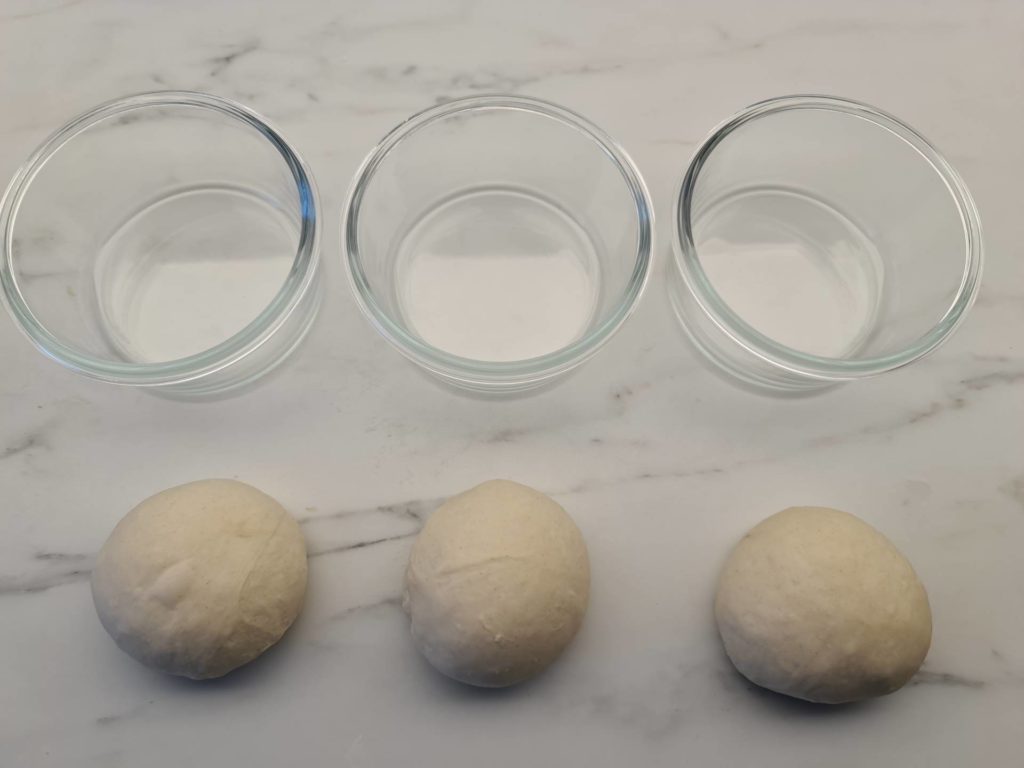
2. Oil the containers
Next, lightly oil your pizza dough containers. This is important to prevent the dough balls from sticking to the container when you’re getting them out.
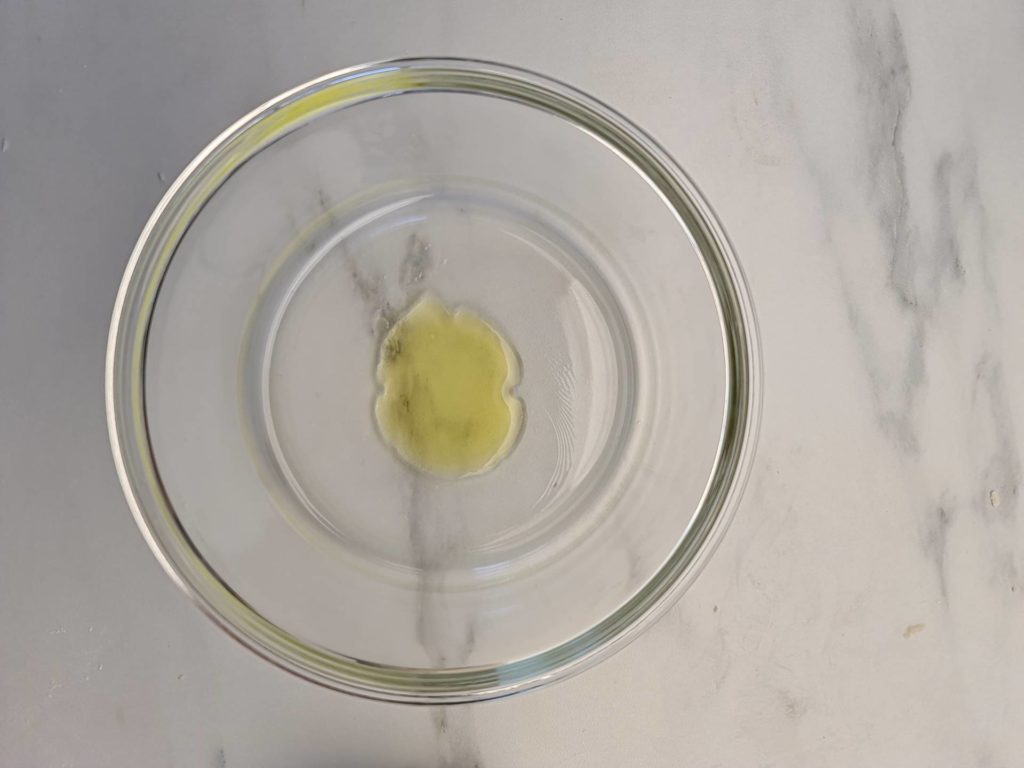
3. Place the dough balls in the container
Place the dough balls in their individual containers and close the lids.
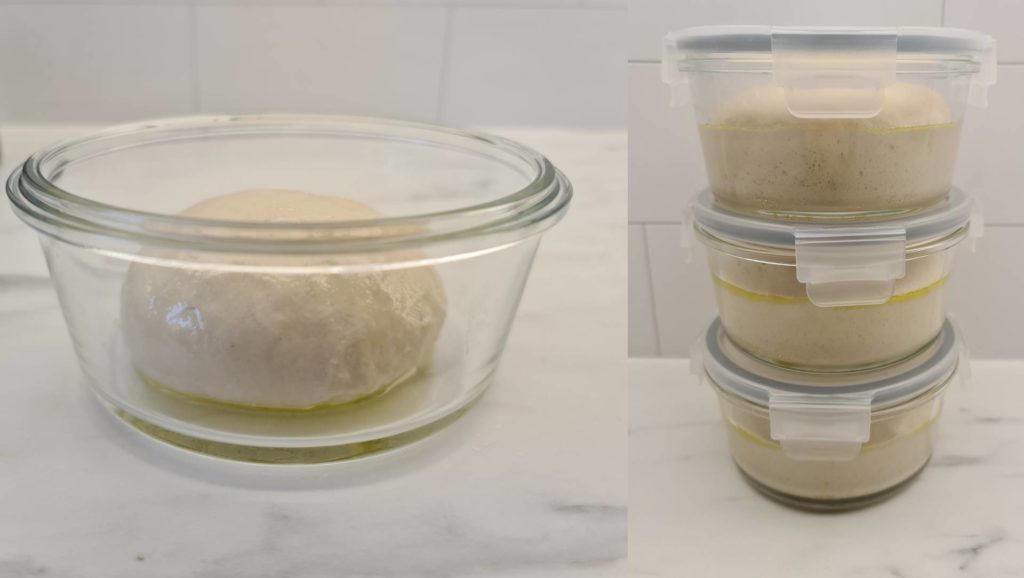
4. Let the dough proof
Now, let the dough ball proof. The length and time of fermentation depend on your recipe. But the dough should relax and grow in volume inside the containers.
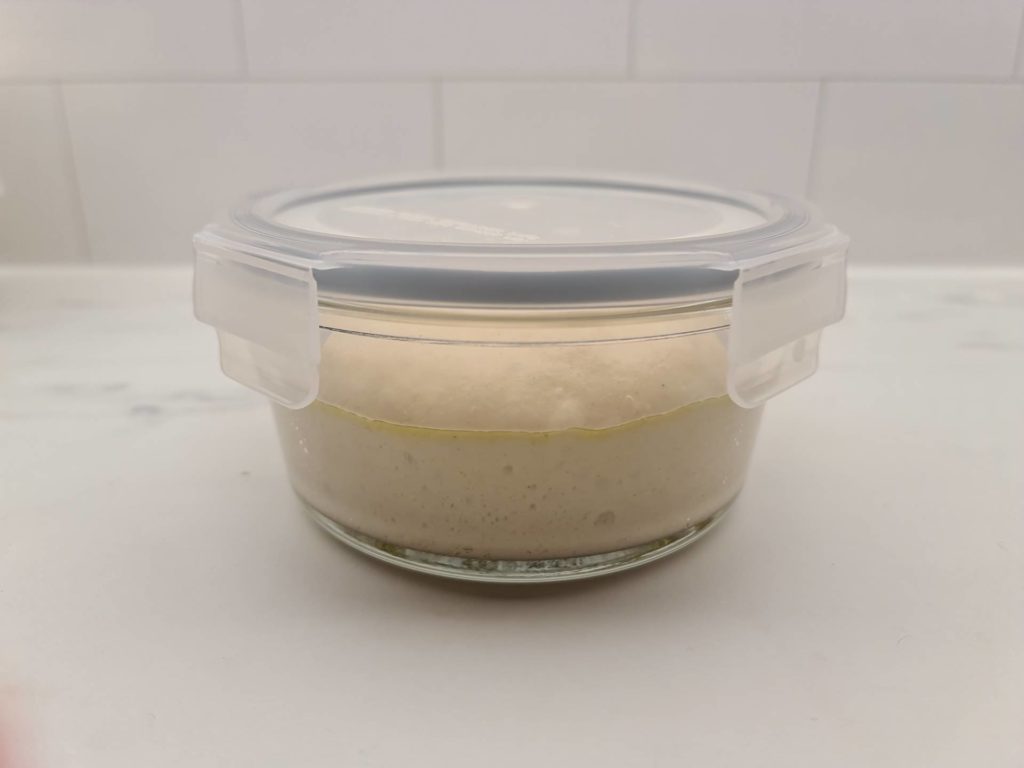
5. Get out the dough
When the dough is done fermenting, prepare a small pile of flour on your countertop or in a bowl and turn the dough balls upside-down. If you oiled the containers properly, the dough should fall out, but you can use your fingers or a dough scraper to help loosen the edges.
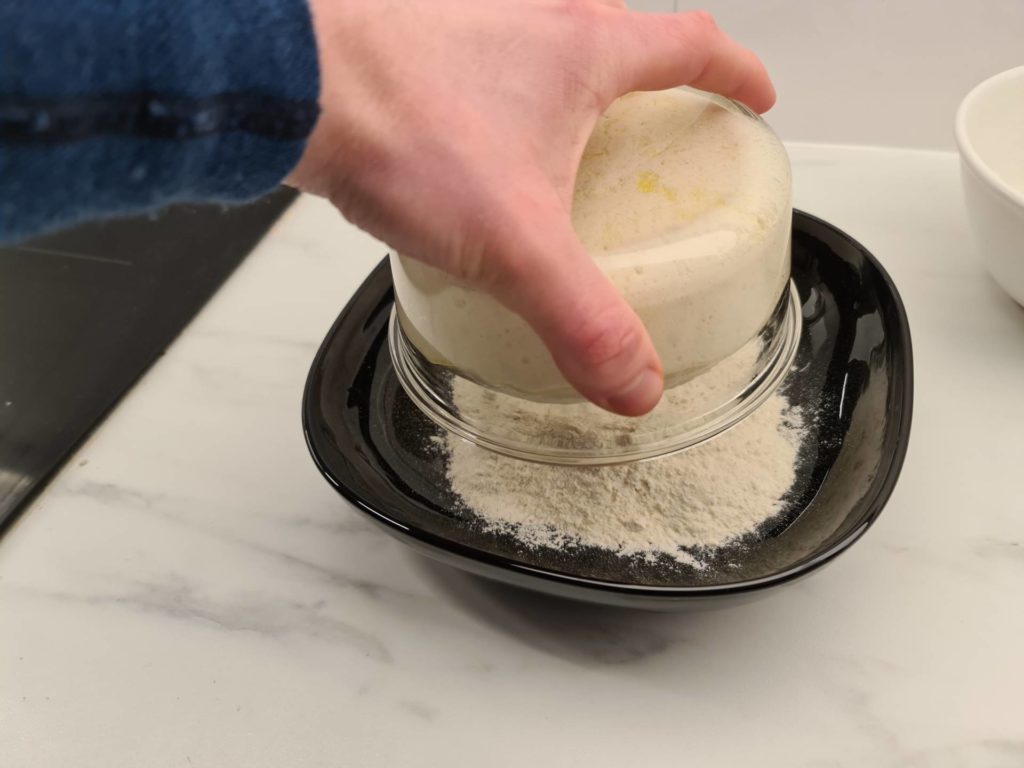
6. Prepare your pizza
Cover the dough ball in flour to get rid of any oil that makes it sticky. Then shake off excess flour and stretch and shape your pizza. Now it’s ready for topping and baking!
Related
- Is Your Pizza Dough Too Dry? Here is How to fix it! - June 10, 2024
- The Ultimate Guide to the Pizza Dough Windowpane Test - June 8, 2024
- The Ultimate Guide to Autolyse Pizza Dough - June 7, 2024




